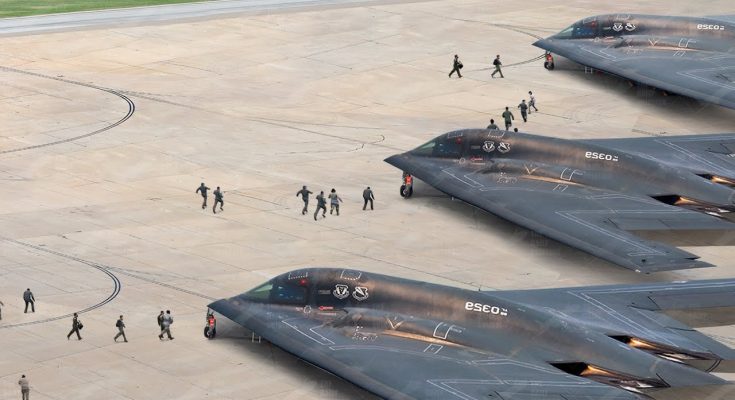The sight of U.S. pilots rushing to their massive stealth bombers and taking off at full throttle represents a thrilling display of military power, precision, and readiness. The U.S. Air Force’s stealth bombers, such as the B-2 Spirit and the emerging B-21 Raider, are among the most advanced aircraft in the world, designed to strike high-value targets deep within enemy territory while evading detection by radar systems.
When pilots scramble to their bombers, the urgency is palpable. The rapid mobilization is often the result of a heightened state of readiness, where time is of the essence. Whether it’s a simulated emergency during a training exercise or a real-world military response, these bombers must be airborne as quickly as possible to carry out strategic missions. Pilots, equipped with their flight suits, helmets, and gloves, race to their aircraft, often in conditions that demand their utmost skill and coordination.
Stealth bombers are designed for a variety of complex missions, from precision strikes against enemy infrastructure to larger, strategic nuclear deterrence. The B-2 Spirit, with its flying wing design, is a key example. It can carry both conventional and nuclear payloads, and its ability to fly undetected by enemy radar systems is what makes it so valuable in modern warfare. The B-21 Raider, the next generation of stealth bombers currently being developed by Northrop Grumman, promises even greater capabilities, including improved survivability and enhanced precision strike options.
Once the pilots reach the cockpit, the action intensifies. They perform a series of pre-flight checks, ensuring that all systems are operating at peak efficiency. The interior of these bombers is packed with state-of-the-art avionics, communication systems, and weapons targeting systems, allowing the pilots to execute their missions with unparalleled accuracy. The engines, capable of generating immense thrust, roar to life as the pilots engage full throttle and prepare for takeoff. The takeoff itself is a high-stakes operation. These bombers are not only heavy due to their size and weapons payload but also have specialized flight systems that allow them to fly stealthily at long ranges.
The takeoff is typically smooth but powerful, with the bomber soaring into the sky with incredible speed. As the aircraft ascends, its low radar signature makes it virtually invisible to enemy detection systems. This is crucial when operating in hostile airspace, as stealth bombers often have to penetrate heavily defended regions, such as those protected by surface-to-air missile systems and enemy fighter jets.
Once airborne, the mission begins. Whether it’s a demonstration of power in a show of force or a more covert operation, the stealth bomber remains one of the most potent tools in the U.S. military’s arsenal. These bombers are often used to send a message to adversaries, showing that the U.S. is capable of reaching any target, anywhere in the world, at a moment’s notice.
The capability of U.S. stealth bombers to take off at full throttle, surge through the skies, and carry out precision strikes, all while avoiding detection, underscores their importance in modern warfare. In a world where rapid response is crucial and the stakes are high, these bombers represent a powerful and essential component of U.S. defense strategy—ready to take on any challenge at a moment’s notice.



